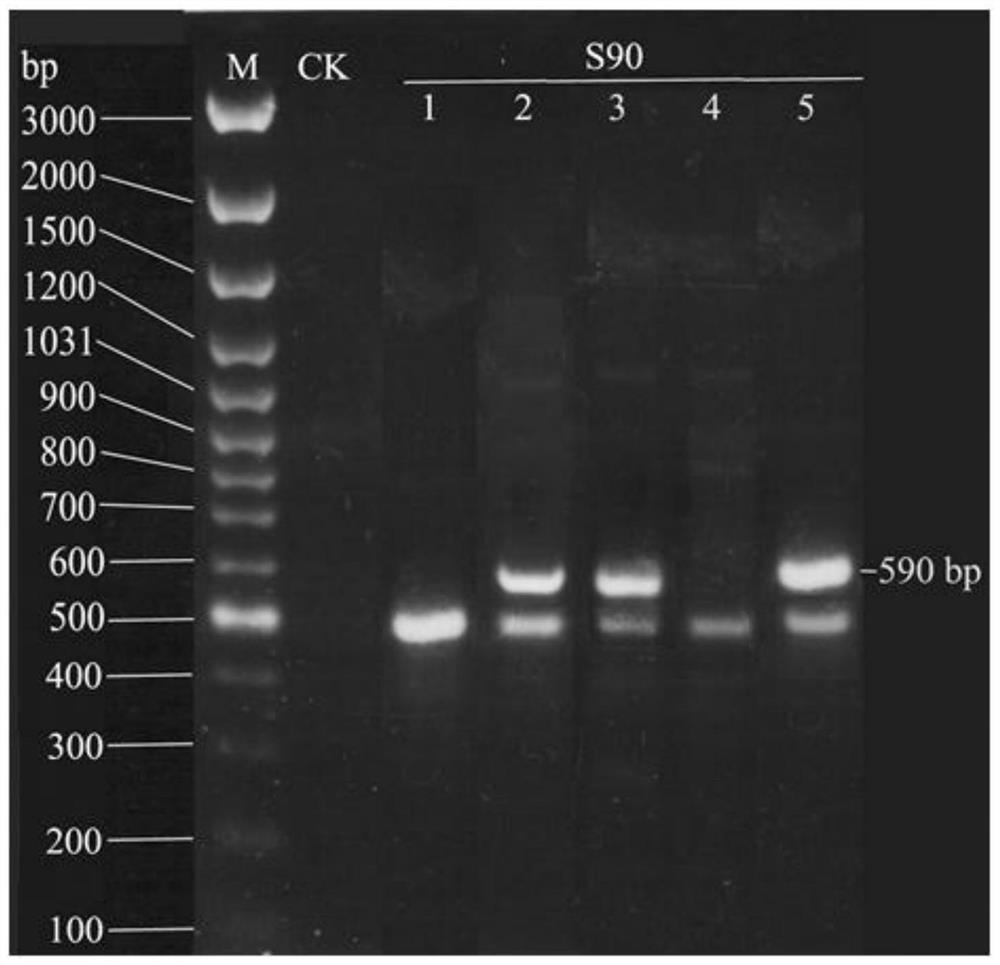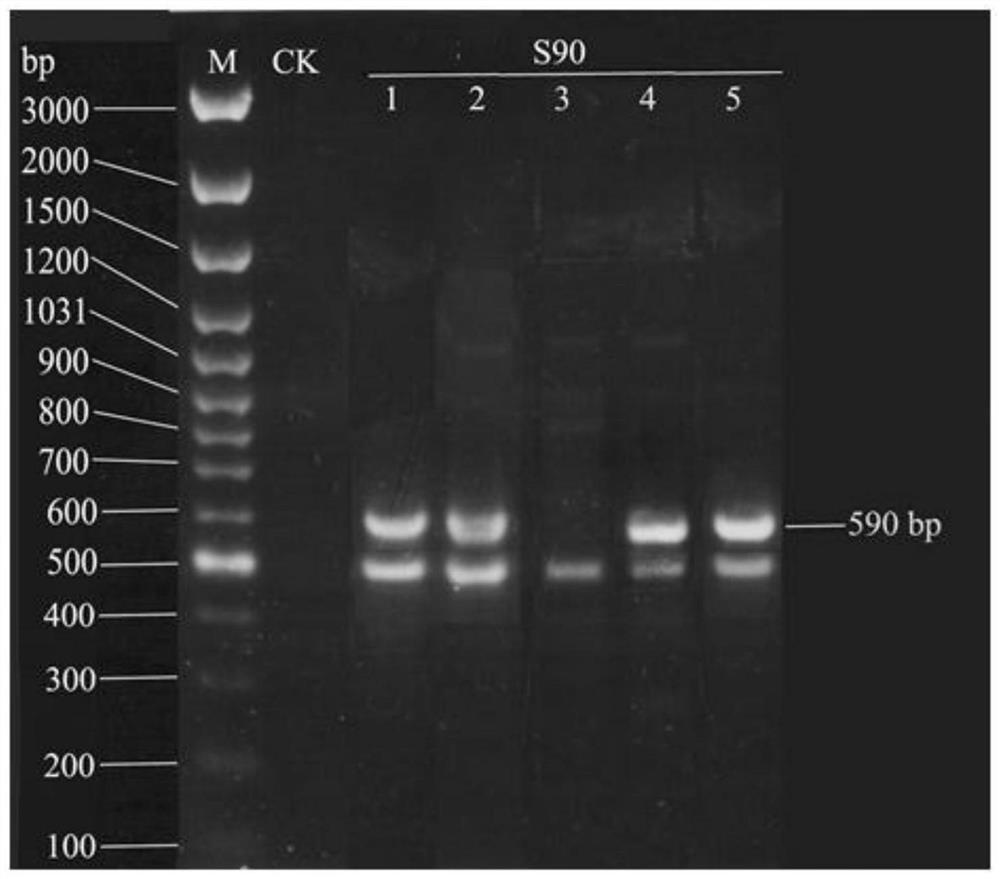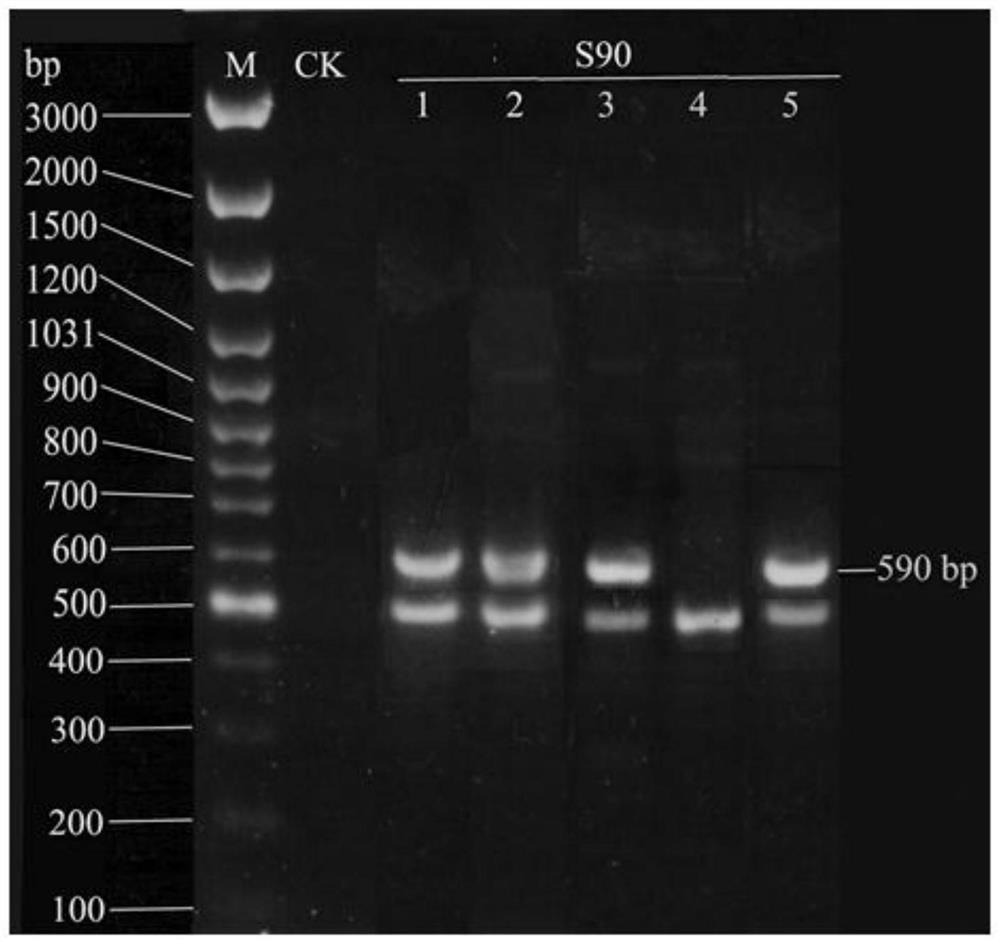A method for identifying the advantages and disadvantages of spirulina algae silk drainage performance by rapd detection
A technology of algal silk draining water and spirulina, applied in microorganism-based methods, biochemical equipment and methods, and microbial determination/inspection, etc. problem, to achieve the effect of low cost
- Summary
- Abstract
- Description
- Claims
- Application Information
AI Technical Summary
Problems solved by technology
Method used
Image
Examples
Embodiment Construction
[0024] The technical solutions of the present invention will be described in detail below in conjunction with specific implementation examples.
[0025] 1. Selection of sample materials: use 3 well-known strains of Spirulina platensis Sp-3, Sp-4, and Sp-15 that are widely used in large-scale production and cultivation, and are also preserved in the Institute of Nuclear Agricultural Sciences of Zhejiang University affiliated to the applicant . The applicant guarantees that samples can be provided to the public as needed during the validity period of the patent.
[0026] 2. Reagents and instruments: Filter paper for filtration is produced by Hangzhou Wohua Filter Paper Co., Ltd.; Taq DNA polymerase and agarose are products of Shanghai Sangon Bioengineering Co., Ltd.; dNTP, DNA restriction endonuclease, and RNase A are all from Japan TaKaRa Company Product; the sequence of PCR random primer S90 is 5'-AGGGCCGTCT-3', which was synthesized by Shanghai Yingjun Company; other reagent...
PUM
| Property | Measurement | Unit |
|---|---|---|
| length | aaaaa | aaaaa |
Abstract
Description
Claims
Application Information
 Login to View More
Login to View More - R&D Engineer
- R&D Manager
- IP Professional
- Industry Leading Data Capabilities
- Powerful AI technology
- Patent DNA Extraction
Browse by: Latest US Patents, China's latest patents, Technical Efficacy Thesaurus, Application Domain, Technology Topic, Popular Technical Reports.
© 2024 PatSnap. All rights reserved.Legal|Privacy policy|Modern Slavery Act Transparency Statement|Sitemap|About US| Contact US: help@patsnap.com










